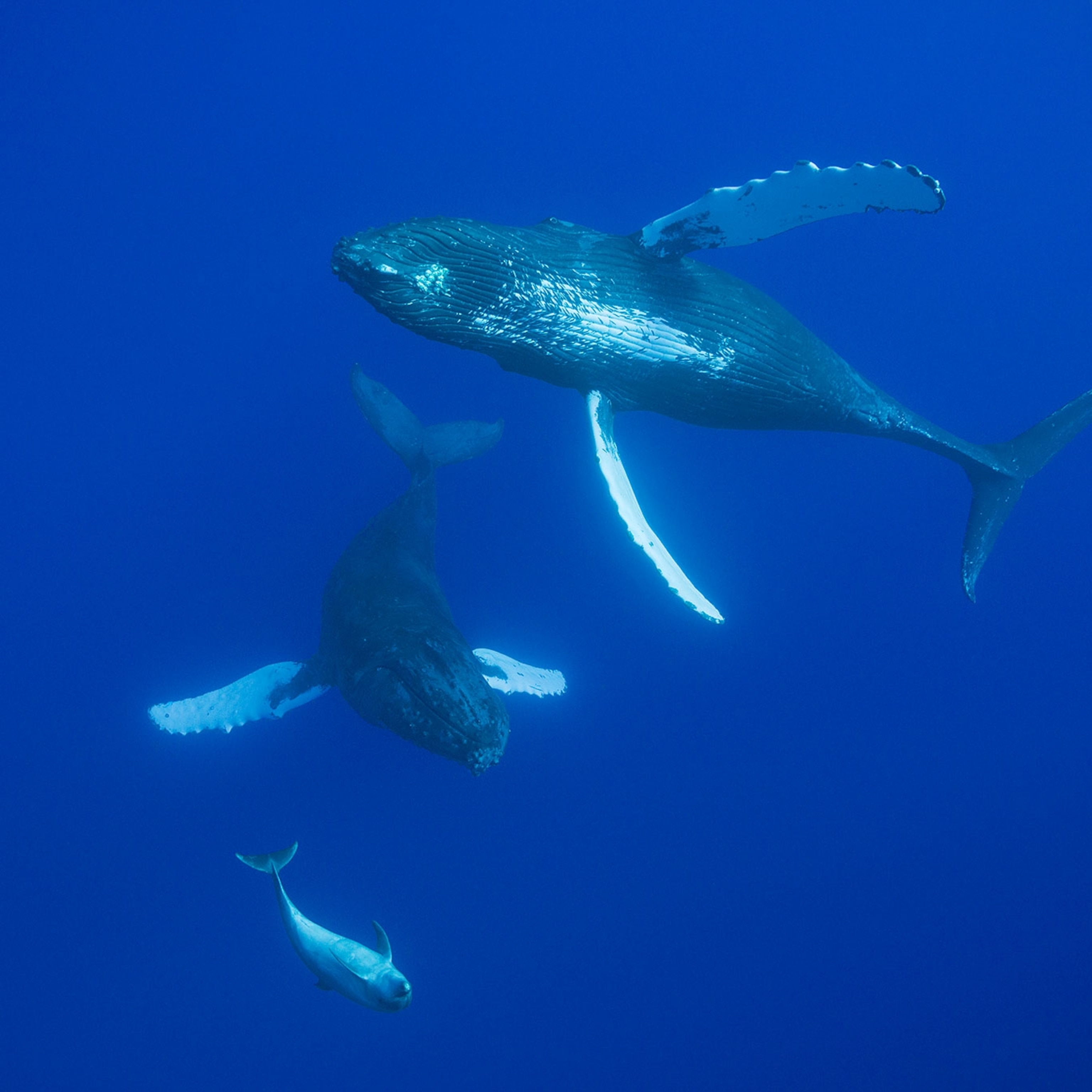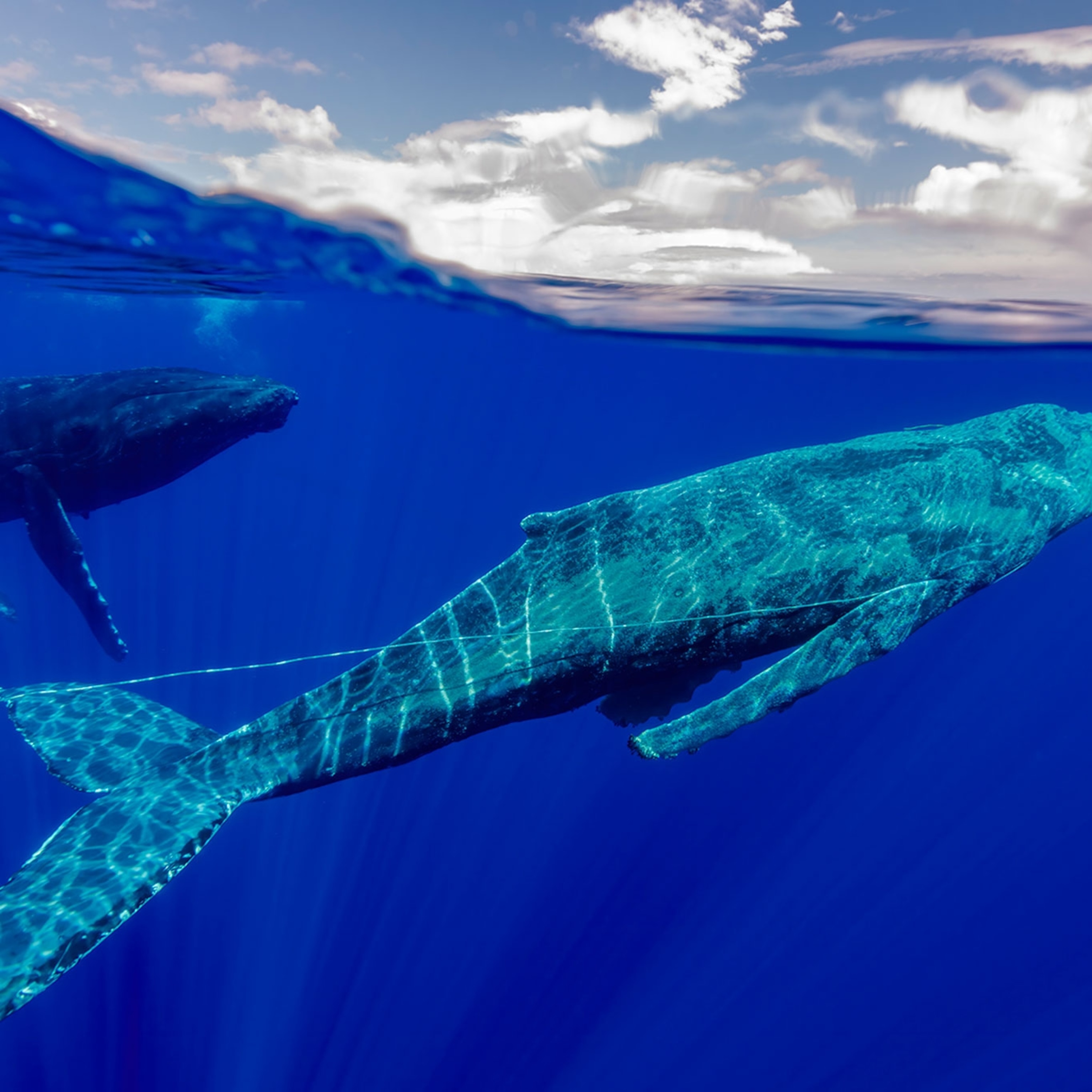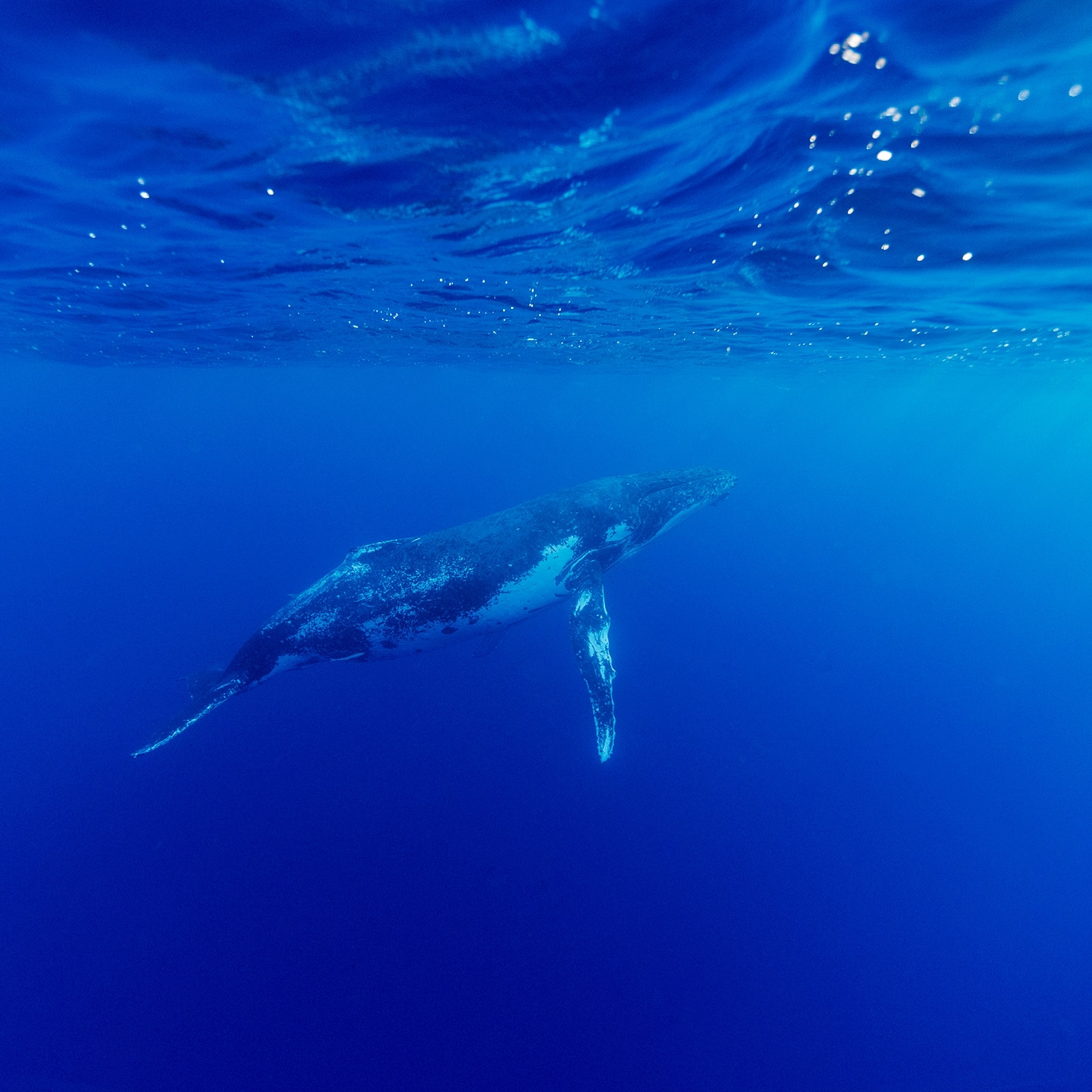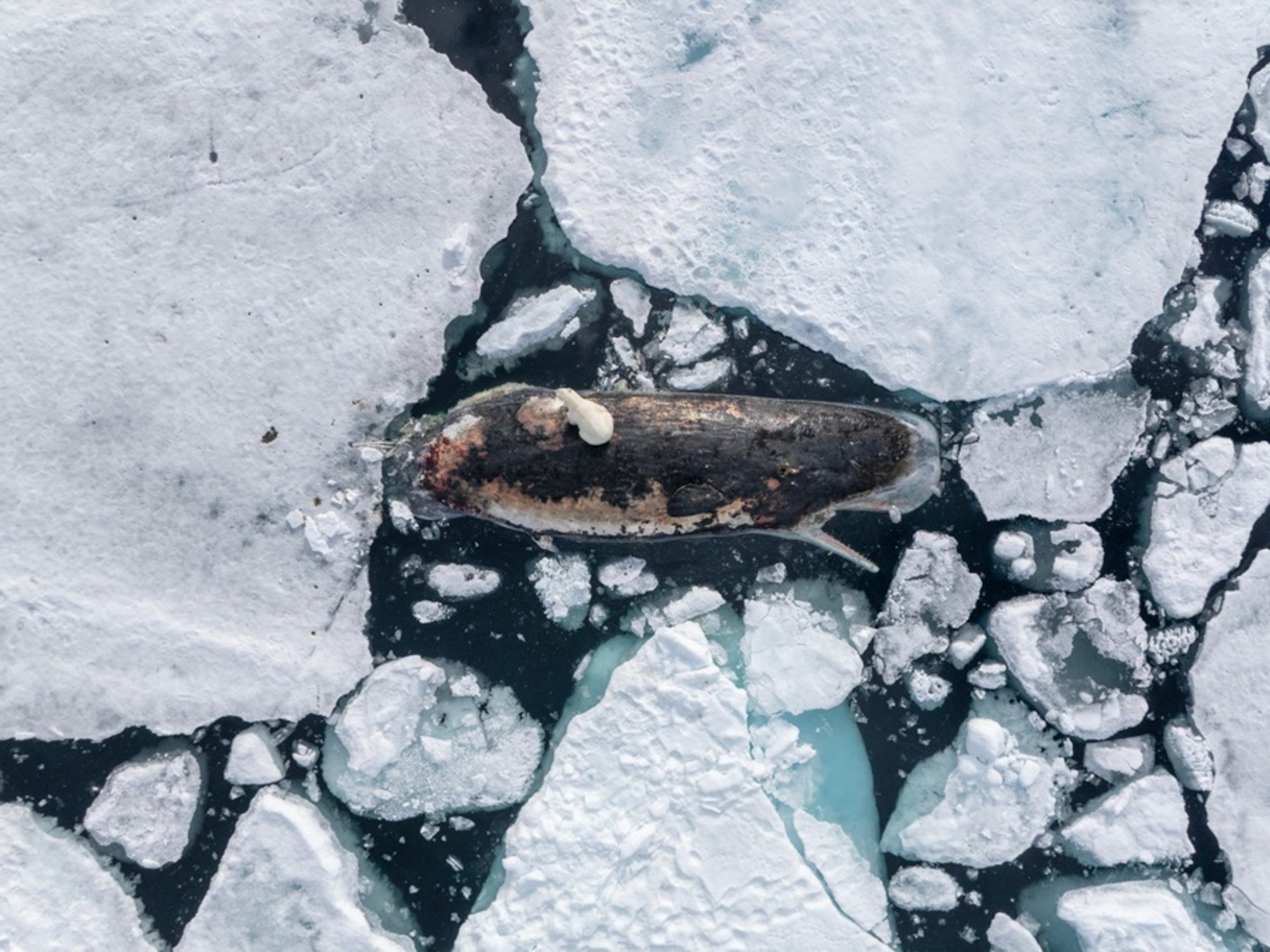Get an Amazing Whale's-Eye View Underneath Antarctica
Cameras attached to humpback whales are giving researchers fresh insight into a rapidly changing Southern Ocean.
To see the world through the eyes of a 40-ton polar whale it helps to use a little bug. At least that's what this satellite tracking tag resembles.
We're crammed into an inflatable black rubber zodiac on a blustery day in Antarctica's Gerlache Strait, puttering toward a motionless humpback whale. A fist-sized camera with gangly grasshopper-like antennae and suction cup feet sits on a pole resting on scientist Ari Friedlaender's shoulders. Towering icebergs and glacier-draped mountains rise around us. Penguins arc in and out of the frigid sea. Every few moments the humpback lets loose a loud exhalation that sounds like a wet snore.
As we inch to within 15 feet of the whale, Friedlaender drops the pole. He uses it to gently slap the harmless satellite tag's suction cups onto whale flesh. The startled animal shudders and dives. And it begins recording a whale's-eye view of a changing undersea universe, helping reshape our knowledge of whale life in the Southern Ocean.
This temporary satellite tag and video camera is one of only six or eight a year that scientists like Friedlaender are able to attach to humpbacks in the waters along the western side of the Antarctic Peninsula. The devices track cetacean movements and take video images of everything in front of the whale for 24 to 48 hours before falling off and floating free. Researchers then use GPS tracking to recover the tag before offloading its video.
"There's so much we don't know about these animals," says Friedlaender, a National Geographic explorer and ecologist with Oregon State University's Marine Mammal Institute. "But now we're getting to see so much awesome stuff—feeding behavior, deep dives, social interactions. It's just amazing."
This simple but time-consuming research method does more than just provide new data. It's helping scientists piece together a picture of what a day in the life of a humpback is like as it swims along the icy bottom of the world. The research is supported by the World Wildlife Fund.
Sea of Change
Warming temperatures are changing Antarctica's seas faster than most waters on Earth. There are now 80 more ice-free days a year on parts of the west side of the peninsula than there were when whaling ended in the 1960s. All that open water is helping humpback populations explode.
They are rising here by up to 10 percent per year, filling in waters once shared with tens of thousands of blue and fin whales, which have been slower to recover from decades of slaughter. This is happening even as ice-dependent minke whales struggle, and Adelie and chinstrap penguin numbers plummet at nearby colonies.
What allows humpbacks here to be so successful that new mothers can be pregnant again even while they’re still lactating and helping to feed newborn calves?
Humpback ecology and behavior in places like California have been well-documented. But scientists have struggled in recent years to track how whales spend their time here after arriving in December and January from their equatorial homes near Panama and Colombia. Research in Antarctica is so hard and expensive that even Friedlaender travels with a cruise company, One Ocean Expeditions, where he gives science lectures to tourists in exchange for access to company rafts that he can use to track down and tag whales.
Even so, with vast travel times and rough, unpredictable weather, it can be hard to get more than a handful of days of field work in on any given trip.
Yet Friedlaender's cameras already reveal new dimensions to whale life in Antarctica.
Surprising Finds
Scientists knew, for example, that these whales feast on great masses of shrimp-like krill in open water even as other creatures struggle to find enough krill near shore. But now they can track when humpbacks start to put on weight, see which foraging areas are most productive, and see what the environment around them is like.
"If all we have is satellite tracking data and no camera then you don't know if they're feeding in ice, if they are around other whales," Friedlaender says. "By linking where they are with where the krill and sea ice are relative to other predators we get a much better idea of the placement of these whales in this ecosystem."
They are uncovering surprises. They've found the whales feeding in waters far deeper than expected. Footage shows them getting so much to eat that they have energy enough to roll and play with one another, a social strategy that helps whales learn how to cooperate and hunt together—and, presumably, get even more food.
They've seen whales spending more time than anyone knew swimming under crumbly brash ice—the detritus of melting sea ice and glaciers. They even appear to be using their blow holes to create openings in the ice to rest or breathe.
"It's really beautiful when they are swimming under the sea ice," he says. "They're so fluid and moving around in three dimensions and just cruising. But to be honest, we don't know what everything we're watching means yet."
Kristin Laidre, a University of Washington polar scientist who studies humpbacks and other marine mammals in the Arctic, says that kind of video work is pretty much the only option in some parts of the world.
"Being able to remotely track animal behavior and movements and how they use habitat is the only way we can make progress on understanding their lives in these polar environments," says Laidre, who mostly works in Greenland.
Sometimes, Friedlaender and his colleagues are able to also use drone cameras to get a simultaneous aerial and underwater view, allowing them to track behavior from multiple perspectives.
And sometimes they even catch glimpses of themselves, when tagged whales surface near where scientists are working.
"One day, one of the tagged whales was mugging us, spy-hoping and rolling around underneath us, basically playing with us like we were a little toy for a couple of hours while it was videotaping," Friedlaender says. "These are magical animals, fantastic and very curious. And it's really cool to see yourself from their perspective, but it's so startling that it's a good reminder that we don't really belong there."
More to the point, Friedlaender added, "I'd really rather see what their world is like below the surface—and without me in it."








